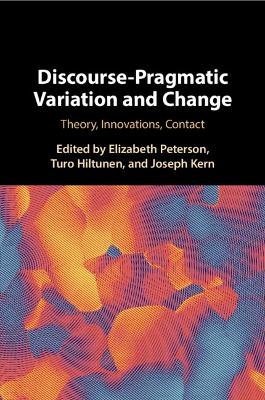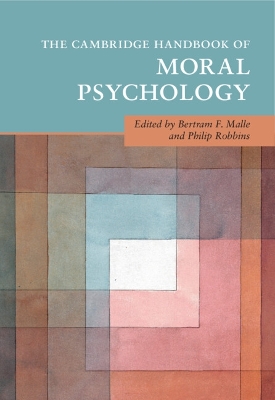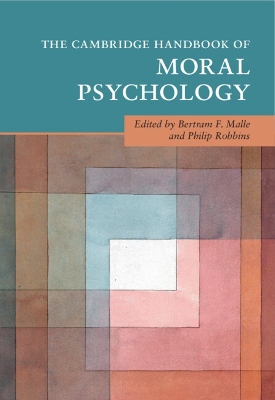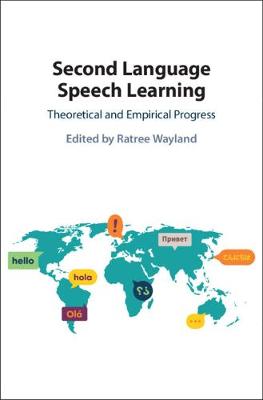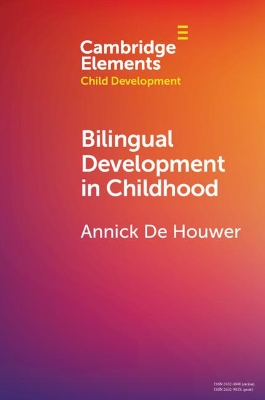Second Language Speech Learning
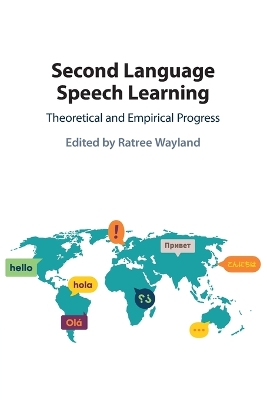 -10%
portes grátis
-10%
portes grátis
Second Language Speech Learning
Theoretical and Empirical Progress
Wayland, Ratree
Cambridge University Press
03/2024
535
Mole
9781108814614
15 a 20 dias
Descrição não disponível.
Part I. Theoretical Progress: 1. The revised speech learning model (SLM-r) (with supplemental materials) James Emil Flege and Ocke-Schwen Bohn; 2. The revised speech learning model (SLM-r) applied James Emil Flege, Katsura Aoyama, and Ocke-Schwen Bohn; 3. New methods for second-language (L2) speech research James Emil Flege; 4. Phonetic and phonological influences on the discrimination of non-native phones Michael D. Tyler; 5. The past, present, and future of lexical stress in second-language speech production and perception Annie Tremblay; Part II. Segmental Acquisition: 6. English obstruent perception by native mandarin, korean and english speakers Yen-Chen Hao and Kenneth de Jong; 7. Changes in the first year of immersion: An acoustic analysis of /s/ produced by japanese adults and children Katsura Aoyama; 8. Effects of the postvocalic nasal on the perception of american english vowels by native speakers of american english and japanese Takeshi Nozawa and Ratree Wayland; Part III. Acquiring Suprasegmental Features: 9. Relating production and perception of L2 tone James Kirby and ?inh Ly Giang; 10. Production of mandarin tones by L1-Spanish early learners in a classroom setting Lucrecia Rallo Fabra, Xialin Liu, Si Chen, Ratree Wayland; 11. Production of english lexical stress by arabic speakers Wael Zuraiq and Joan A. Sereno; 12. Variability in speaking rate of native and non-native speech Melissa M. Baese-Berk and Ann R. Bradlow; Part IV. Accentedness and Acoustic Features: 13. Comparing segmental and prosodic contributions to speech accent Maria Oganyan, Richard Wright and Elizabeth McCullough; 14. Do Proficient mandarin speakers of english exhibit an interlanguage speech intelligibility benefit when tested with complex sound-meaning mapping tasks? Marta Ortega-Llebaria, Claire Chu and Carrie Demmans Epp; 15. Foreign accent in L2 Japanese: Cross-sectional study Kaori Idemaru, Kimiko Tsukada and Misaki Kato; Part V. Cognitive and Psychological Variables: 16. Self-reported effort of listening to non-native accented English depends on talker pausing and listener working memory capacity Mengxi Lin and Alexander L. Francis; 17. Investigating the role of cognitive abilities in phonetic learning of foreign consonants and lexical tones Irina. A. Shport; 18. Auditory priming effects on the pronunciation of second-language vowels Lindsay Leong, Trude Heift and Yue Wang; 19. Indexical effects in cross-language speech perception: The case of japanese listeners and english fricatives Benjamin Munson, Fangfang Li and Kiyoko Yoneyama; 20. The role of orienting attention during perceptual training in learning nonnative tones and consonants Ying Chen and Eric Pederson.
Este título pertence ao(s) assunto(s) indicados(s). Para ver outros títulos clique no assunto desejado.
Part I. Theoretical Progress: 1. The revised speech learning model (SLM-r) (with supplemental materials) James Emil Flege and Ocke-Schwen Bohn; 2. The revised speech learning model (SLM-r) applied James Emil Flege, Katsura Aoyama, and Ocke-Schwen Bohn; 3. New methods for second-language (L2) speech research James Emil Flege; 4. Phonetic and phonological influences on the discrimination of non-native phones Michael D. Tyler; 5. The past, present, and future of lexical stress in second-language speech production and perception Annie Tremblay; Part II. Segmental Acquisition: 6. English obstruent perception by native mandarin, korean and english speakers Yen-Chen Hao and Kenneth de Jong; 7. Changes in the first year of immersion: An acoustic analysis of /s/ produced by japanese adults and children Katsura Aoyama; 8. Effects of the postvocalic nasal on the perception of american english vowels by native speakers of american english and japanese Takeshi Nozawa and Ratree Wayland; Part III. Acquiring Suprasegmental Features: 9. Relating production and perception of L2 tone James Kirby and ?inh Ly Giang; 10. Production of mandarin tones by L1-Spanish early learners in a classroom setting Lucrecia Rallo Fabra, Xialin Liu, Si Chen, Ratree Wayland; 11. Production of english lexical stress by arabic speakers Wael Zuraiq and Joan A. Sereno; 12. Variability in speaking rate of native and non-native speech Melissa M. Baese-Berk and Ann R. Bradlow; Part IV. Accentedness and Acoustic Features: 13. Comparing segmental and prosodic contributions to speech accent Maria Oganyan, Richard Wright and Elizabeth McCullough; 14. Do Proficient mandarin speakers of english exhibit an interlanguage speech intelligibility benefit when tested with complex sound-meaning mapping tasks? Marta Ortega-Llebaria, Claire Chu and Carrie Demmans Epp; 15. Foreign accent in L2 Japanese: Cross-sectional study Kaori Idemaru, Kimiko Tsukada and Misaki Kato; Part V. Cognitive and Psychological Variables: 16. Self-reported effort of listening to non-native accented English depends on talker pausing and listener working memory capacity Mengxi Lin and Alexander L. Francis; 17. Investigating the role of cognitive abilities in phonetic learning of foreign consonants and lexical tones Irina. A. Shport; 18. Auditory priming effects on the pronunciation of second-language vowels Lindsay Leong, Trude Heift and Yue Wang; 19. Indexical effects in cross-language speech perception: The case of japanese listeners and english fricatives Benjamin Munson, Fangfang Li and Kiyoko Yoneyama; 20. The role of orienting attention during perceptual training in learning nonnative tones and consonants Ying Chen and Eric Pederson.
Este título pertence ao(s) assunto(s) indicados(s). Para ver outros títulos clique no assunto desejado.

